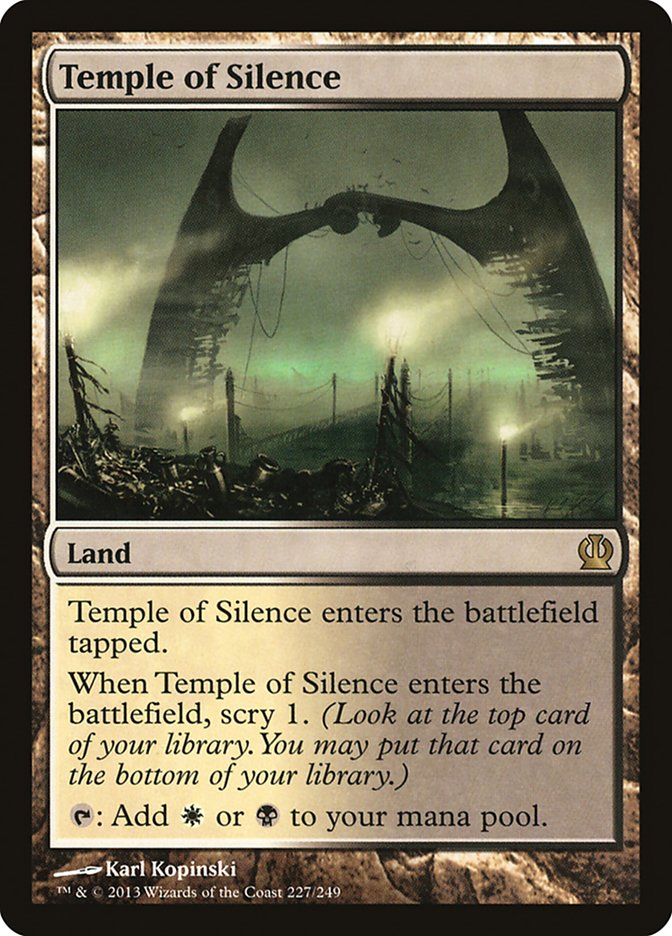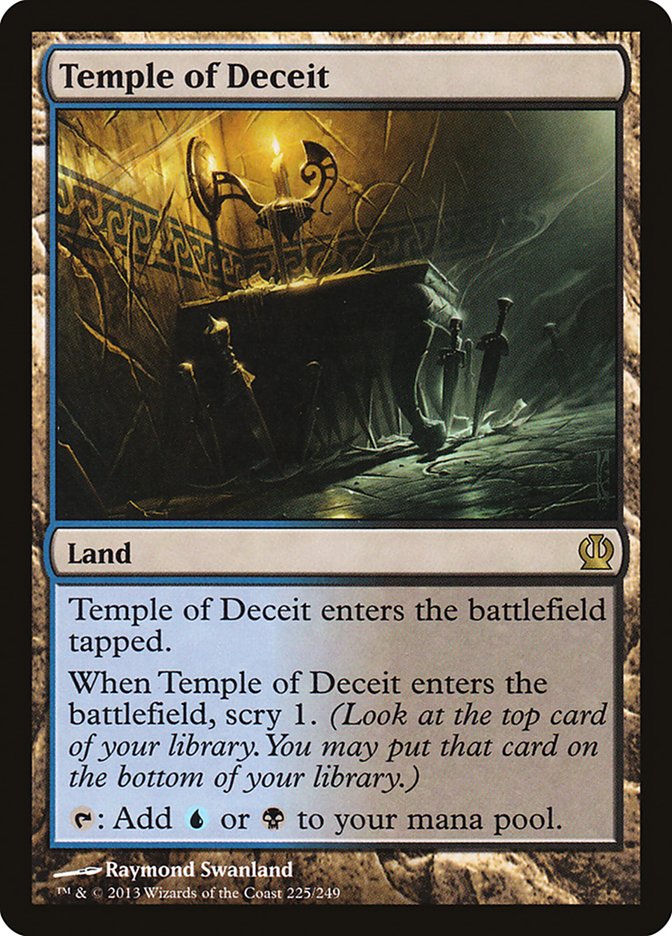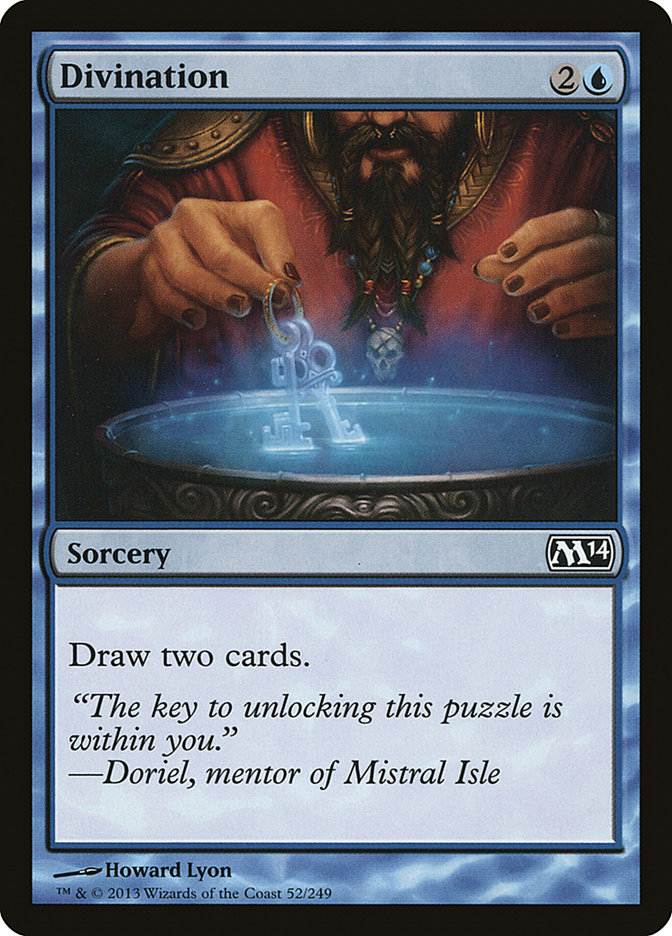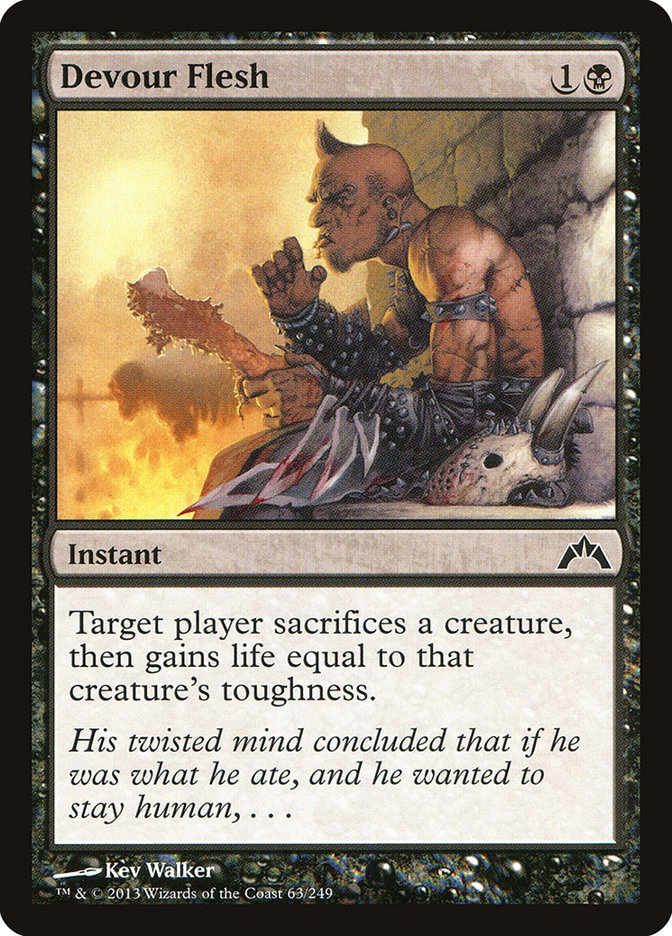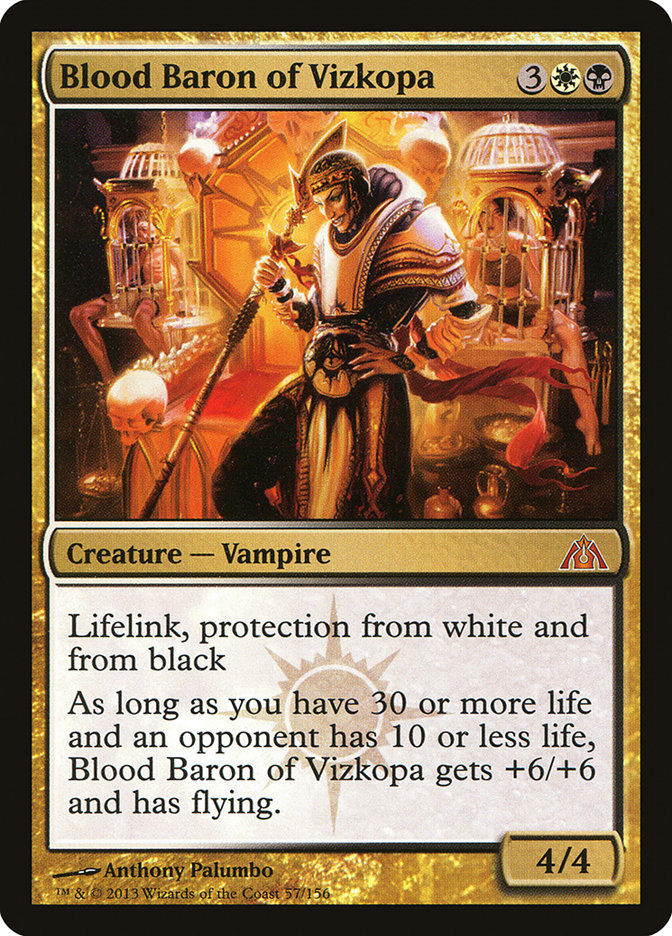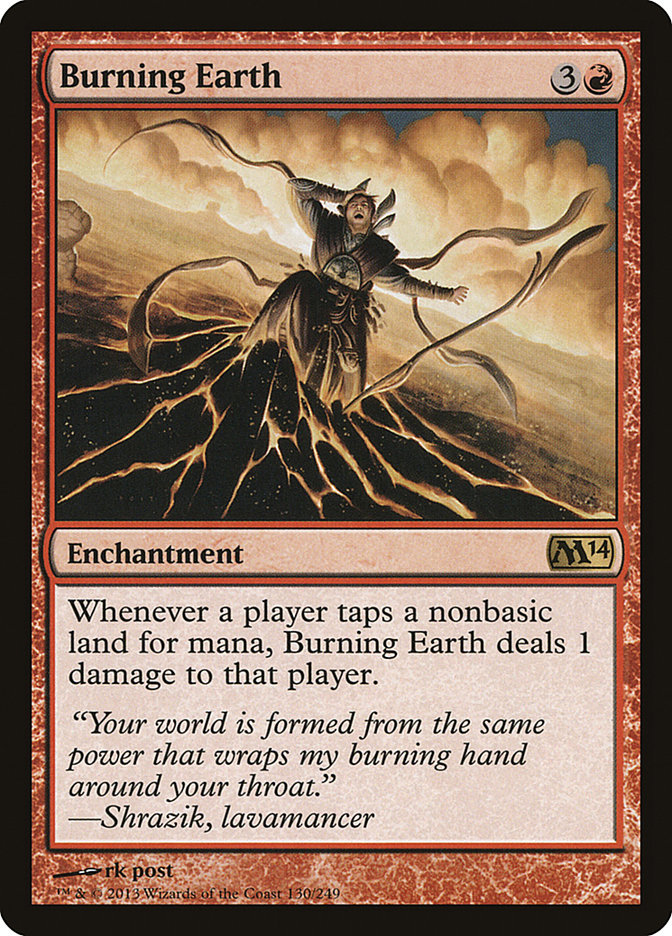I just wrapped up at Grand Prix Louisville, where I played Esper Control to a final record of 6-3. Unfortunately, I lost a tough win-and-in match to a friend from the local game store to not make day 2, but I’m glad that somebody I know made it in because of my loss.
I had a great time playing at the tournament and really liked my deck choice a lot. My friend Alex John lost his win-and-in match to make Top 8 playing my exact 75. So I’m fairly certain that if a few things had broken my way I too could have been positioned to make a strong run in the event.
First things first, I think that Esper Control is an inherently powerful strategy. The cards are all very good and very versatile. On top of simply having a deck full of “good cards,” the deck has a nearly unbeatable late game of Aetherling; Elspeth, Sun’s Champion; and Sphinx’s Revelation to trounce the opponent into the dirt and put them away.
I started with Wafo-Tapa’s list from the Pro Tour and made a few adjustments that I felt would make the deck better against how I felt the metagame might begin to shift. For the most part I was really satisfied with how those changes played out. In this article I am going to go over the deck, how it matches up against the field, and what to do in critical matchups.
First of all, here is the list that Alex and I played at the GP:
Creatures (1)
Planeswalkers (6)
Lands (26)
Spells (27)

After discussing the decklist with Alex on the ride home we both agreed that slightly changing the deck to the following would make it even stronger moving forward:
Creatures (1)
Planeswalkers (6)
Lands (26)
Spells (27)

This list is very similar to Wafo-Tapa’s, but there are some differences.
First, I wanted another Plains in the deck. I felt like there were a lot of times during testing where I was short on white mana to play a turn 2 Azorius Charm or couldn’t produce WW on turn 4 to cast Supreme Verdict.
After adding the Plains I felt that I could make the deck slightly more mana efficient by cutting a Dissolve and a Hero’s Downfall for a Detention Sphere and a Syncopate.
There are a lot of scenarios where Syncopate is worse than Dissolve later in the game, but the deck seemed so overloaded on sweet three-drops that I felt trying to cut the curve down by adding a potential two-drop and making some of my spells less cumbersome on the same double-color requirements might smooth out some of the more awkward draws.
What is worse than drawing a second Hero’s Downfall when one doesn’t have double black? At least if you already have one, the first Sphere will for sure be a live draw in a desperate mana position.
Another thing that I really want to emphasize about Esper Control is that I a hundred percent believe the reason that it is the best control deck in the format is that it is far and away the best deck at taking advantage of its eight scry lands.
Calmly and casually smoothing out all my draws.
Blue Revelation-based control really suffers from losing a card like Think Twice in order to smooth out draws by ensuring you can keep hitting land drops and have spells to play. In a lot of ways the Temples compensate for this loss by making sure you aren’t too flooded or too land light as you try to get into the midgame.
Esper also doesn’t mind if a few of its lands come into play tapped. The deck doesn’t have a one-drop (good time to scry) or a five-drop. Also, the deck is heavy on three-drops, so you should be looking to save damage and deploy Temples on all of the odd turns if possible (1, 3, and 5).
The deck also has a lot of lands, and drawing a Temple in the late game helps you to not flood out (as you can scry away unneeded lands). The ability to scry away lands late in the game when you no longer want to draw them (i.e. you already have ten-plus mana in play) is very valuable.
On these late turns where drawing another land is basically the same as doing nothing, every time you get to dig a card deeper it is basically the same as drawing a card. Technically, you don’t go up a card, but the card that got scryed away had zero value and didn’t have to be drawn. It’s the same way that Brainstorming away superfluous junk in Legacy isn’t technically plus one card but still creates very real, very relevant virtual card advantage.
Literal card advantage.
I really like Divination in Esper Control and think that it’s a very necessary and very good addition that Wafo-Tapa added to the list. While the deck had some abilities to generate virtual card advantage through scrying and card selection, being able to draw cards in order to have relevant interactions with the board while continuing to hit land drops is really important.
Four Jace, Architect of Thoughts and two Divinations are a nice complement to the scry lands to ensure that in a very high percentage of games you will hit your sixth land drop on turn 6 and will be able to drop an Elspeth or threaten a Sphinx’s Revelation if necessary.
One of the changes to the deck that I made (and really like) is the addition of two Devour Fleshes, which replaced the third and fourth copies of Doom Blade in the maindeck.
A tasty Morsel.
One thing that I anticipated going into the post-Pro Tour metagame is that decks with a lot of removal and difficult-to-kill threats would be a popular thing.
I feel like this evaluation was pretty spot on. I used my Devour Fleshes to kill multiple creatures throughout the tournament that Doom Blade could not have hit. I forced my opponents to eat their Obzedats and Blood Barons all afternoon long. I also got to live the dream of killing a Thassa when my opponent had a Jace and a Bident in play!
If you are what you eat and eat a god, that makes you a god, right? How does one even eat a god? I have no idea, but I have to figure that hot sauce is a must!
Ok, let’s talk about the most important matchups.
G/R Devotion
The G/R Devotion matchup seems pretty favorable pre-board. Esper Control has plenty of ways to kill their creatures and planeswalkers, and G/R has a lot of fat creatures that arrive slowly to the party.
Supreme Verdict is insane versus this deck because it is often going to be a two-, three-, or four-for-one that literally cripples their game plan. They have lots of mana dorks, which means quickly Verdicting away their board will greatly slow down their ability to deploy their high-end threats. It will also take Nykthos as a combo piece out of the equation.
+1 Pithing Needle
+1 Negate
+1 Thoughtseize
+1 Doom Blade
-2 Devour Flesh
-2 Azorius Charm
Most of these decks are going to bank really hard on their ability to produce more planeswalkers and more quality threats post-sideboard.
Devour Flesh is not great against this deck because they can protect their actual threats with mana dorks. My primary focus is to have as many ways as possible to not lose to Xenagos, the Reveler or haste creatures like Stormbreath Dragon and Mistcutter Hydra.
The G/R deck doesn’t actually have a super-fast clock and wants to set up shop by getting positional advantage with planeswalkers to force through damage with haste creatures. Keeping your head above water is really important post-sideboard because once you start to fall behind they have lots of ways drown you. Boon Satyr, Stormbreath Dragon, and Mistcutter Hydra are all cards that will very quickly lower your life total and win the game.
Esper or U/W Control
I feel like the Esper mirror is about 50%.
I also think that Esper matches up very favorably against U/W. The scry lands do a ton of work against U/W, which is a big advantage since they are far more likely to lose games to flood or screw than Esper is.
In the mirror match board advantage is the name of the game. I think that getting Jace on board and stopping an opponent from having Jace is really, really important.
Other than that whoever finds and resolves Aetherling first almost always wins since there is basically no way to kill it in game 1. Jace is obviously great because he will allow you to continue making land drops and digging toward an Aetherling.
One thing that tends to be true is that if one player gets to draw cards with the same Jace, they almost always win.
If both Aetherlings get Thoughtseized or countered, it is very likely that the game will be decided by whose library runs out first. So a lot of times it pays to know how many cards you can Sphinx’s Revelation for and still have more cards in your library in the late game!
+1 Thoughtseize
+3 Blood Baron of Vizkopa
+2 Sin Collector
+2 Gainsay
+2 Negate
-3 Azorius Charm
-2 Devour Flesh
-2 Doom Blade
-3 Supreme Verdict
In the mirror match we are trying to increase our threat density and ability to interact with the opponent while at the same time trying to lighten the load on dead cards.
I like to leave in one Supreme Verdict to answer opposing Blood Barons or random creatures they might have. I also like that Verdict can mop up the mess if they get an Elspeth down and can kill it. Post-sideboard games tend not to go nearly as long as pre-board games. There is so much interaction via counters, Thoughtseizes, and a higher threat density that most of the time somebody ends up crippled and dying to a threat pretty quickly.
That is the reason that I don’t really care for Ashiok in the Esper mirror match. If I had Ashiok, I would board it in, but I think I’d rather just have another counter, Duress, or Sin Collector. Since the games don’t tend to go as long it is far less likely that getting decked is going to be as much of a factor, and there are so many ways to kill an Ashiok that it is rarely going to ultimate.
Soldier of the Pantheon is also an option for the mirror, which is another reason why I like leaving in my Verdicts. My problem with bringing it in is that it is easily trumped by all of the other threats like Blood Baron, Elspeth, and Aetherling.
However, I did bring in my Soldiers in a game 3 at the GP when there was only about six minutes left in the round and played two of them on turns 1 and 2 to win the game. I think that with a short clock I would almost always board them in if I didn’t feel like there would be enough time to play a full game of a reasonable control mirror in the amount of time that was left.
Getting ahead on board is basically the most important aspect of these matchups. Producing a threat and protecting it to win the game is what Esper wants to be accomplishing. Blood Baron is very good a quickly clocking basically everything the mirror can produce. It is also sweet that neither Gainsay nor Negate counter Bloodington Baron.
B/W or B/R/W Midrange
It is my opinion that the B/W Midrange matchups should pretty heavily favor Esper Control. For the most part their cards try to trade one-for-one, and many of them are stone blanks against Esper. They only have a few ways of generating actual card advantage, and Esper has plenty of meaningful ways to interact with these cards.
Detention Sphere is an all-star in this matchup because it can attack their Whips (which generate infinite Obzedats) and their Underworld Connections and planeswalkers (which are their only ways to do anything).
The one thing that B/W has going for it is that it has more threats than Esper—and good threats at that. Obzedat can easily win a game, as can a Blood Baron of Vizkopa, if the Esper player cannot match up the appropriate answer to the threat. Devour Flesh is a hedge against these decks and earns Esper important percentage points.
Basically, if you can stop Underworld Connections and kill a quality creature, Esper Control will eventually produce a Sphinx’s Revelation and easily take over the game.
They also have basically no outs to Aetherling besides Thoughtseizeing it away.
When I played against B/W at the GP, my opponent Thoughtseized away my Aetherling and killed both of my Elspeths, but I was able to take control of the game via Revelation and Jace. I stockpiled some counters and removal and started +1ing my Jace. Eventually I was able to ultimate it and took my opponent’s Whip of Erebos and used it to animate my Aetherling, attack with it, and blink it out!
This is actually a pretty common play against B/W if Aetherling gets Thoughtseized. Alex told me he made the exact same play against a B/W opponent.
+3 Blood Baron of Vizkopa
+1 Thoughtseize
+1 Pithing Needle
-2 Doom Blade
-3 Azorius Charm
Is Blood Baron of Vizkopa good against B/W?
Baby Progenitus.
Your plan after sideboard is the exact same as it is pre-board—kill all their creatures and resolve a Sphinx’s Revelation—but you get a victory condition that is extremely difficult for them to deal with once it gets on the battlefield.
Pithing Needle is also a thing because it can stop their Erebos from drawing them out of trouble and name Swamp or whatever land they try to play their Underworld Connections from being able to activate to draw cards.
Remember, don’t name Underworld Connections because it doesn’t have an activated ability—it grants the land it is enchanting the activated ability to tap and draw a card.
Mono-Blue Devotion
Generally speaking I think this matchup is really positive for Esper Control. Mono-Blue Devotion really struggles to beat a Supreme Verdict and also with opposing removal and card draw.
It’s pretty simple. They play a bunch of durdle creatures, and you kill them off and draw more cards than they do.
+2 Gainsay
+1 Doom Blade
-1 Azorius Charm
-2 Devour Flesh
We upgrade the quality of a few of our cards against them. Obviously Counterspell is going to be great for Esper Control in this matchup in the form of Gainsay. Just don’t fall behind and randomly die.
The biggest thing to be careful about is to not die to an end-of-turn Cyclonic Rift on Detention Sphere to suddenly produce a very deadly offensive force for a turn! I like holding my Thoughtseizes for a while against this deck to make sure that my powerful spells like Sphinx’s Revelation are going to go through and to not die to random Cyclonic Rifts at end of turn.
Naya Midrange
I think this matchup generally favors Esper Control just because Naya Midrange comes out a little bit slower than Mono-Red Aggro and sometimes struggles to pace Esper’s wall of removal.
The biggest way that Esper loses to this deck is against a draw where Voice of Resurgence ends up making a lot of Esper’s cards blanks. Naya is one of those decks that have a really high power level of cards but struggles with its mana and its ability to consistently have great plays available.
However, when the stars are right, Naya can kill anyone anytime almost no matter what.
Be aware of Ghor-Clan Rampager and Boros Charm and stay above water and more often than not you’ll do fine!
+3 Blood Baron of Vizkopa
+3 Soldier of the Pantheon
+1 Doom Blade
-3 Azorius Charm
-2 Thoughtseize
-2 Devour Flesh
Soldier of the Pantheon is an absolute beating against decks that are trying to beat down with multicolored creatures like Fleecemane Lion and Loxodon Smiter. It is also great because it can attack and kill their planeswalkers while gaining life as your removal is taking care of their actual creatures.
Mono-Red Aggro
I think that this matchup is actually one of the more difficult ones. Mono-Red is set up to attack much more quickly than Esper can often dispatch its threats.
One-mana two-power creatures, hasty creatures, and Burning-Tree Emissary all provide challenges that Esper Control must account for.
Luckily we have Sphinx’s Revelation to come to the rescue!
If you can stay alive into the mid-to-late game, Revelation becomes absolutely insane since the life gain will often put you clear out of reach. However, if Mono-Red Aggro curves out well, only a perfect set of answers will keep Esper Control alive. If they stumble a little bit on mana or don’t have a one-drop, though, your odds of winning become very reasonable.
With any deck we must accept bad matchups, and fast aggro certainly seems like it falls into that category for Esper Control.
+3 Blood Baron of Vizkopa
+3 Soldier of the Pantheon
+1 Doom Blade
-2 Thoughtseize
-1 Aetherling
-2 Dissolve
-1 Jace, Architect of Thought
-1 Syncopate
Unfortunately things don’t seem to get a ton better for Esper Control post-sideboard. It kind of seems like they would improve, but there is a big problem:
The world is on fire! Nooooooooo!!!
Well, Burning Earth is basically the worst possible card for an Esper Control deck to face. It must be answered almost immediately or will almost always end the game in most situations.
It is awkward that they can be ahead on board via fast threats and then top it off with a Burning Earth that will make it nearly impossible for Esper to deal with the already present threats as well as the enchantment in the same turn. Either way taking a ton of damage is about to happen.
It’s also a pain in the butt that Burning Earth can only be answered by a unique set of cards in the Esper deck, namely Detention Sphere.
While a lot of Mono-Red Aggro’s threats are redundant in the form of creatures, Burning Earth can crush Esper Control out of nowhere. They could be empty-handed, and Esper could have three Doom Blades in play and easily lose to a Burning Earth off the top.
Blood Baron of Vizkopa is obviously great against a red deck if you can get it deployed and attacking or blocking. I also like how he doubles as a win condition and a card that arbitrarily will beat out a Burning Earth.
And that’s my guide to playing Esper Control in Standard! I will certainly be playing the heck out of this deck at all of the local tournaments in my area. I think that the deck is extremely powerful and very capable of beating any deck in the room, which is about all one can ask for in a deck.
A lot of people I talked to at the GP said the deck they didn’t want to play against in the tournament was Esper Control because they felt it was a difficult matchup.
The one problem with a late-game control deck like Esper unfortunately is that because you are trying to force the game to go long there are a lot of opportunities for things to go wrong. It is possible to get ahead and then have your opponent zip back into the game by drawing good cards at the right time or for the Esper deck to draw a ton of cards but not draw the specific ones it needs to win.
The familiar “I drew twenty extra cards and didn’t see one Supreme Verdict!”
Or “He drew Obzedat, and I just couldn’t draw a Hero’s Downfall to kill it and died.”
Most of the time the deck is so good that it can power through these issues, which is why I think it is inevitably a very good deck.
I have been having more fun playing this Esper Control deck in Standard than I have playing a Standard deck in a long time. But maybe that’s just because Thragtusk is finally gone!
I know there will inevitably be things to nitpick about this Standard format as it unfolds, but every time someone says, “I hate interaction X, Y, or Z or some card,” just calmly and casually reply with, “Yeah, but at least there is no more Thragtusk.”
Cheers all,

